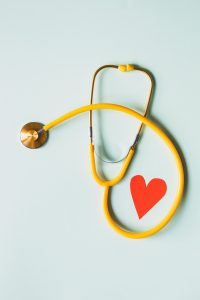
Getting older causes changes in your heart, including the inability for your heart to beat as quickly as when you were younger, during periods of stress or physical activity.[1]
Chest pain can sometimes be a sign that there is an inadequate supply of blood to your heart, which is known as angina.[2] Even though not all chest pain can be angina, it’s important to see your primary treating physician right away if you do experience chest pain. Angina can feel like intense pressure or even a burning in your chest; the pain can be felt not only in the chest area but also in the throat, back, shoulders and inner arms.
Unfortunately, some people, especially women, may not even have chest pain during a heart attack and may not have other symptoms either. However, difficulty in catching your breath can be a sign of heart disease, so it’s important to reach out to your doctor if you are having trouble with your breathing. Other signs to look out for are: extreme fatigue during periods of physical activity, dizziness, nausea or even heartburn, racing heartbeat/uneven heartbeat, sweat, restlessness, disorientation, pain in left arm or jaw.[3]
However, there are many things you can do to prevent heart disease.[4] You can try to be more physically active and if you smoke, you can plan to quit. Also, you can follow a heart-healthy diet; click here for more information on healthy meal planning. Additionally, limiting consumption of alcohol and managing your stress are important in preventing heart disease. Keeping your blood pressure and cholesterol levels under control is also vital.
[1] https://www.nia.nih.gov/health/heart-health-and-aging
[2] https://www.healthinaging.org/a-z-topic/heart-attack/symptoms
[3] https://www.healthinaging.org/a-z-topic/heart-attack/symptoms
[4] https://www.nia.nih.gov/health/heart-health-and-aging